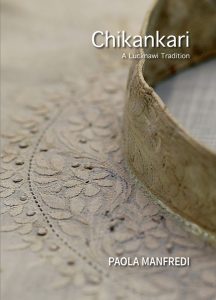For the Nawabs & for the Masses: Understanding the Art of Chikankari and Why It Needs to Be Saved
Paola Manfredi’s book, ‘Chikankari; A Lucknawi Tradition’, explores the division of labour that the traditional indigenous art form sees, amongst other things.

Madhubani, Phad, Warli, Kalamkari, Tanjore are some of the rich art forms that have survived the wreck of time. Chikankari straight from the royal courts of Lucknow is just one of them which adds up to the list. Believed to be introduced by Nur Jahan, wife of Emperor Jahangir, this intricate methodology of embroidery dates back two centuries.
A delicate needlework comprising of 32 stitches, this craft has well defined gender specific roles. As per Paola Manfredi’s book, ‘Chikankari; A Lucknawi Tradition’, men do the tailoring, printing and laundering while embroidery is predominantly women’s work. This gender division was never that rigid, particularly not in the last thirty years which have seen some changes such as the entry of NGOs to address the appalling conditions of the home-based female chikankari embroiders.
Further Paola mentions that despite the various private initiatives and government schemes to revive chikan embroidery and to address the problems of the sector, mainly abysmal low wages and health related issues affecting the craftsperson involved in it, there is no proper documentation and almost no samples are visible or accessible.“The exploitative and the villain like role of the middleman have often been highlighted though it is rather an essential role within this system to move the pieces around.
The relationship that exists between the middleman and the artisans is more complex than the generations can encompass” Manfredi adds.

With the objective of ensuring that crafts women engaged in this embroidery industry get sufficient and regular work at fair wages without exploitation by middlemen, manufacturers and other entrepreneurs, SEWA has been extensively involved in organising women engaged in the chikankari industry and has built up a network of over 7,000 women who are supported by the organisation not just in securing minimum wages and creating a market for their products but also in getting education for their children as well as better health services.
Established with 31 women in 1984, the USP of this organisation was rejuvenation of Chikankari and it has remarkably succeeded in restoring the dignity of the craft.
Shilp Sadhna is another NGO which has been working towards the amelioration of the conditions of the artisans. This society has formed 15 Self Help Groups of grass root level women artisans of Chikan craft in the Lucknow district.
Capturing the sophistication and intricacies of the art from the land of nawabs, Paola Manfredi has immensely contributed to the sparsely existing literary sources on this ancestral art and craft by coming up with ‘Chikankari; a Lucknawi Tradition’. Published by Niyogi Books, her extensive research of 30 years has been beautifully compiled in her book. It is the right step towards preserving the age old tradition to be embraced by the future generations as well.
Despite the global appeal of this handicraft, the carriers of the Lucknawi legacy, the skillful artisans need a lot of support. To preserve the art of indigenous needlework, it is necessary to increase its visibility in the markets.
In addition to that, the government must take measures to organise the sector of Chikankari in Lucknow.
To get a deeper insight of this surviving art, buy ‘Chikankari; a Lucknawi Tradition’ by Paola Manfredi here http://amzn.to/2rSskHi
Like this story? Or have something to share?
Write to us: [email protected]
Connect with us on Facebook and Twitter.
NEW: Click here to get positive news on WhatsApp!
If you found our stories insightful, informative, or even just enjoyable, we invite you to consider making a voluntary payment to support the work we do at The Better India. Your contribution helps us continue producing quality content that educates, inspires, and drives positive change.
Choose one of the payment options below for your contribution-
By paying for the stories you value, you directly contribute to sustaining our efforts focused on making a difference in the world. Together, let's ensure that impactful stories continue to be told and shared, enriching lives and communities alike.
Thank you for your support. Here are some frequently asked questions you might find helpful to know why you are contributing?


This story made me
-
97
-
121
-
89
-
167














